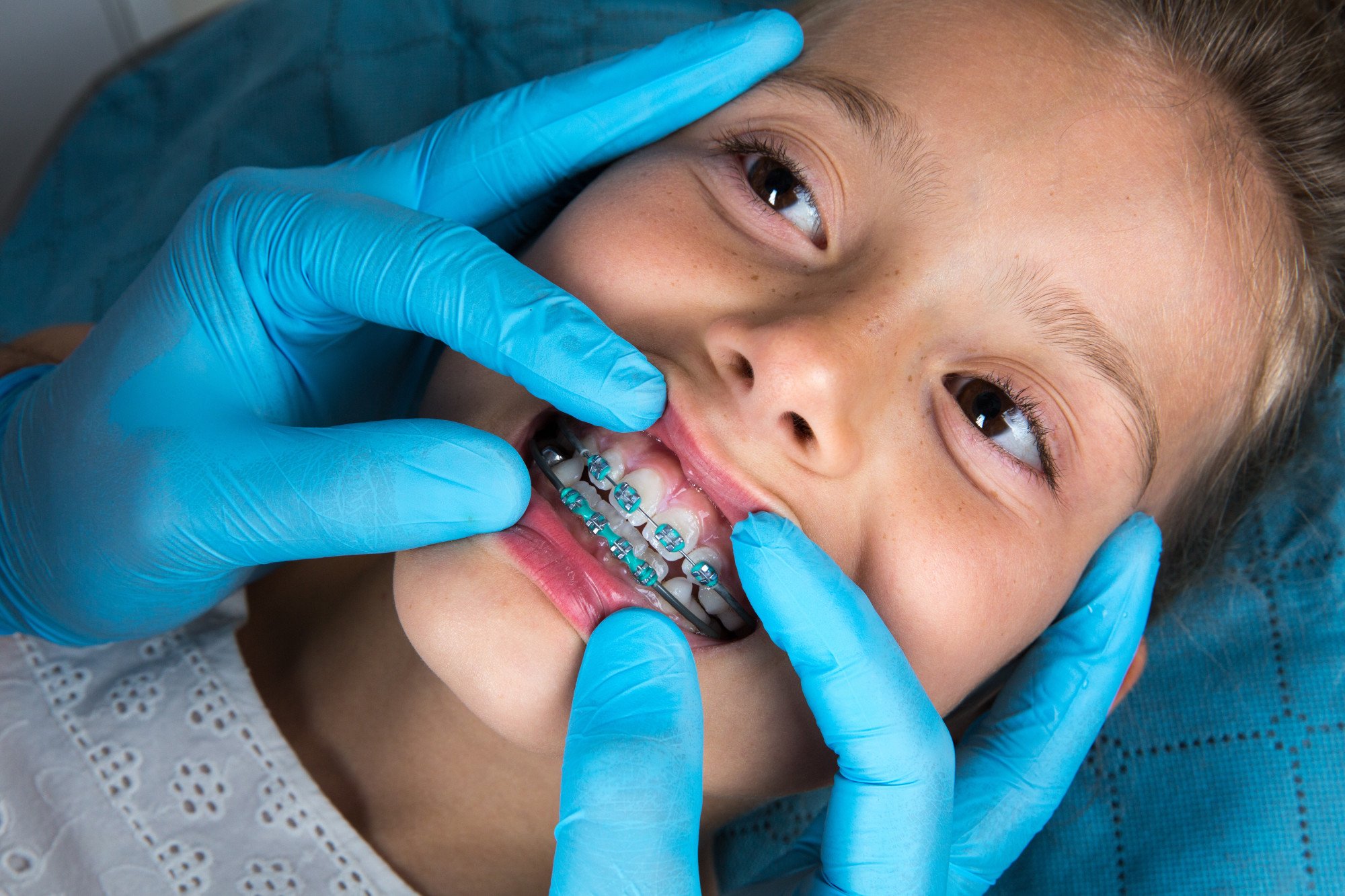Are you interested in getting braces, but you’re a little worried about your age?
It might be a natural reaction since braces are usually associated with children or young adults. However, knowing the answer to “Can you be too young or too old to have braces?” can help reassure you that you’re making the right choice to straighten your teeth.
Braces are one of the most cost-effective ways to improve the health of your mouth and teeth. If you’re worried about the downside of being too young or too old, read on to find out more about the best age for braces.
For Children and Adolescents
When it comes to pediatric orthodontics, timing is everything. Parents often grapple with questions about the right age to consider braces for their children.
Too Young
There isn’t a strict age limit for braces, but most orthodontists recommend waiting until a child has lost most of their baby teeth and their permanent teeth have come in. This typically begins around the ages of 9 to 14. The exact timing depends on individual dental development.
Too Old
Children and adolescents generally respond well to orthodontic treatment because their jaws are still growing, making it easier to correct alignment issues. However, it’s essential to consult with an orthodontist to determine the best time for treatment.
For Adults
Many adults find themselves contemplating orthodontic treatment to achieve a straighter, healthier smile, but concerns about age often linger in the background. Here’s what you should know.
Too Young
Adults can undergo orthodontic treatment at any age, provided they have healthy teeth and gums. There’s no strict lower age limit for adults to get braces, as long as their oral health is suitable for the procedure.
Too Old
There’s no upper age limit for braces, either. Adults can pursue orthodontic treatment to improve their dental alignment and overall oral health. However, it’s important to note that treatment may take longer in older adults because their bones are no longer growing.
Factors to Consider
If you are in the middle of deciding if you’re at the right age or you’re going for invisalign vs braces, make sure to know the factors to consider with braces or even both. You might realize if you’ll go for the former or the latter.
Oral Health
Regardless of age, good oral health is essential before getting braces. This includes healthy gums and teeth without significant decay or periodontal disease. Addressing dental problems before getting braces can positively affect your general well-being. It can prevent complications from arising during treatment.
Good oral health provides a solid foundation for successful orthodontic treatment. Teeth and gums that are free from decay, infection, or periodontal disease are more likely to respond well to orthodontic adjustments.
Braces can make it challenging to clean teeth thoroughly. For individuals with poor oral hygiene habits or existing dental issues, braces can exacerbate these problems. Maintaining excellent oral health before getting braces helps reduce the risk of complications during treatment.
Treatment Goals
The goals of orthodontic treatment can vary widely from person to person. For children, treatment goals may focus on correcting issues related to growth and development. This can include bite alignment or jaw expansion.
In contrast, adults may have different priorities. This can include addressing cosmetic concerns or improving oral function. Understanding your specific treatment goals ensures that the orthodontic approach is tailored to your unique needs.
The choice of orthodontic treatment can depend on age and treatment goals, whether it’s:
- traditional braces
- clear aligners
- other options
For both young individuals and adults, orthodontic treatment can enhance oral function. This includes:
- improving chewing
- speech
- overall comfort
Treatment goals may involve addressing functional issues like overbites, underbites, or crossbites to promote better oral health and well-being.
Young patients may have more flexibility in their treatment plans due to ongoing growth, while adults may require different strategies to achieve their desired results.
Bone Density
Braces work by applying gentle, controlled forces to move teeth into their desired positions. To achieve this, braces rely on the stability and anchorage provided by the surrounding bone. Adequate bone density is crucial to ensure that teeth can be moved effectively. It’s also crucial that they can be maintained in their new positions once treatment is complete.
During orthodontic treatment, some degree of temporary bone resorption can occur at the site where teeth are being moved. This is a natural part of the tooth-moving process. However, it’s important to note that individuals with pre-existing issues of low bone density may be more susceptible to excessive bone loss.
Bone density is not the only consideration; bone quality matters, too. Orthodontists evaluate the overall health and condition of the bone when planning orthodontic treatments. In some cases, additional measures, such as bone grafts or different orthodontic techniques, may be necessary to account for lower bone density or quality.
Commitment
Orthodontic treatment plans typically involve a series of appointments for adjustments, maintenance, and progress checks. Both young individuals and adults need to commit to attending these appointments regularly. Missing appointments or not following the prescribed treatment plan can lead to delays, complications, or less effective results.
Braces often come with dietary restrictions to prevent damage to the brackets and wires. Patients need to commit to following these guidelines to avoid breakages or setbacks in treatment. Young individuals and adults alike must be willing to make dietary adjustments.
Dietary restrictions can be challenging for kids who are new to any type of braces for several reasons. Braces introduce a significant change in how kids eat. Many of their favorite foods may become off-limits or require modification. This can be frustrating and difficult to adjust to, especially for children who are used to a certain diet.
Kids often have cravings for foods that are restricted with braces, such as hard candies, popcorn, and sticky sweets. The temptation to indulge in these treats can be hard to resist, leading to non-compliance with dietary recommendations.
Know What Affects the Best Age for Braces
Braces can be an effective decision no matter your age! Not too young, not too old — make sure you speak to your orthodontist for an assessment to decide the best timeline for you if you are concerned about the best age for braces.
Taking control and taking measures to ensure you have the best possible smile can make all the difference in the years to come! Reach out to your orthodontist today for a discussion.
Visit our blog for more articles. We’ve got more!










